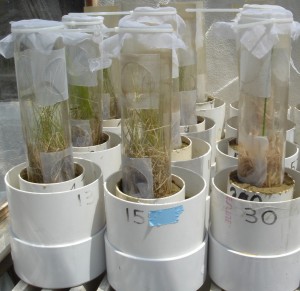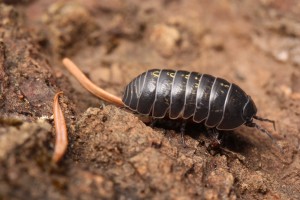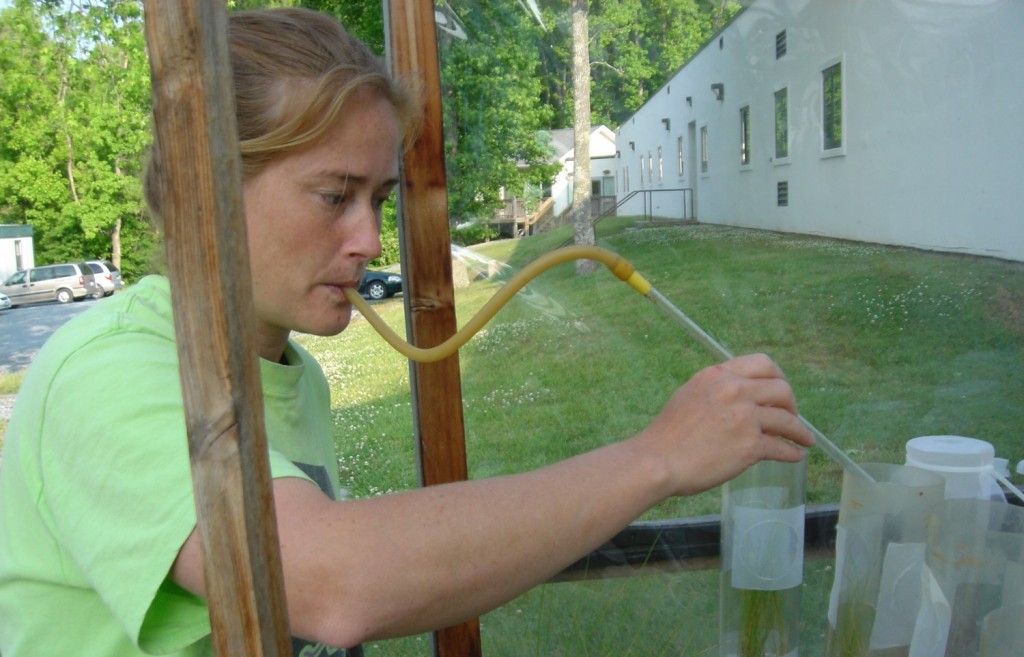by Kristen Minogue
In the battle to hold back climate change, Mother Nature has supplied several allies, from the rainforest to bacteria. Now we can add one more to the list: Woodlice, tiny scavenger bugs that feed off rotting plants.
More than 3,000 species of woodlice are known to man, and they go by many names. If you’re American, chances are you know them as pillbugs or roly-polies. They’ve inherited stranger-sounding titles in other parts of the world, from monkeypigs and carpetmonsters to granfy croogers. (For a list of 40-some-odd British variations, see here.) But they all point to the same thing: a 14-legged, millipede-like crustacean roughly half the size of a dime.
They’re also scavengers, which means they eat the dead, decomposing matter the rest of the food chain shuns. In doing so, it turns out they’re more than simply nature’s janitors. They also can help plants absorb more planet-warming CO2, and possibly slow down climate change, according to a new study published in May from the Smithsonian Environmental Research Center.
Scientists have long known that when CO2 goes up, many plants grow better, enabling them to absorb more CO2 from the atmosphere. But plants aren’t the only players in an ecosystem. Animals—in particular scavengers—can also impact plant growth, by controlling how easy it is for plants to get nutrients from the soil. SERC biologists Jes Hines and Bert Drake set out to uncover how much power soil scavengers like woodlice truly possess.
When woodlice eat decomposing plant litter, they aren’t actually aiming for what’s decomposing. Their nutrition comes from what’s doing the decomposing: tiny microbes in the soil.
“The litter is like a cracker, and the microbes are like the peanut butter on the cracker,” explained Hines, the study’s lead author.
Decomposition releases nutrients from dead leaf litter, nourishing the live plants and helping them grow. As woodlice chew up the dead leaves and their microbes, it was unclear if they would speed up or slow down decomposition—or have any impact on plant growth at all. Hines and Drake ran an experiment in SERC’s Global Change Research Marsh to find out.
Inside plastic chambers, the team created four miniature ecosystems, each with a progressively longer food chain: plants by themselves, plants with dead leaves, plants with dead leaves and woodlice, and plants with leaves, woodlice and predatory spiders. Then, to get a feel for plant growth in the climate of the future, they spiked half the chambers with a double dose of CO2.

Experimental tubes where scientists grew plants with different mixes of woodlice, spiders and CO2. (SERC)
Together, CO2 and woodlice acted like plant steroids. Plants grew 24 percent larger with both woodlice and high CO2 compared to plants with neither. But the scientists received a surprise when they threw spiders into the mix. The spiders ate plenty of the woodlice, fulfilling their job as predators—but that didn’t slow down plant growth or decomposition. To all appearances, the remaining woodlice seemed perfectly able to pick up the slack.
Hines has a few guesses as to why this could be. Fewer competitors could mean the woodlice could each eat more food. Perhaps their dead bodies sped up decomposition. But her best guess? The woodlice are simply scared. Fear of getting eaten has been known to make grasshoppers eat more; it could be just as true for woodlice.
Either way, the plants win. And either way, a once-marginalized part of the food chain has proven to be an essential link enabling plants to soak up some of our excess CO2.
One more reason to love your local louse.
Article Reference:
Hines, J., N. Eisenhauer, and B. Drake. 2015. Inter-annual changes in detritus based food chains can enhance plant growth response to elevated atmospheric CO2. Global Change Biology 21: 4642-4650.
DOI: 10.1111/gcb.12965
Pillbug photo by Walter Siegmund used under permission of the GNU Free Documentation License.



